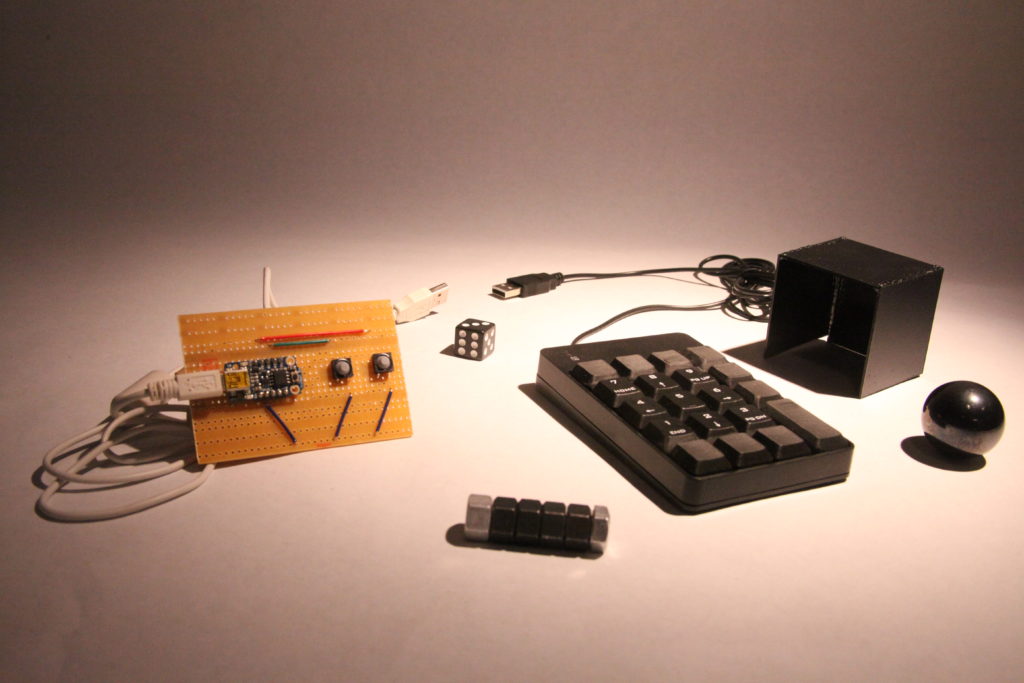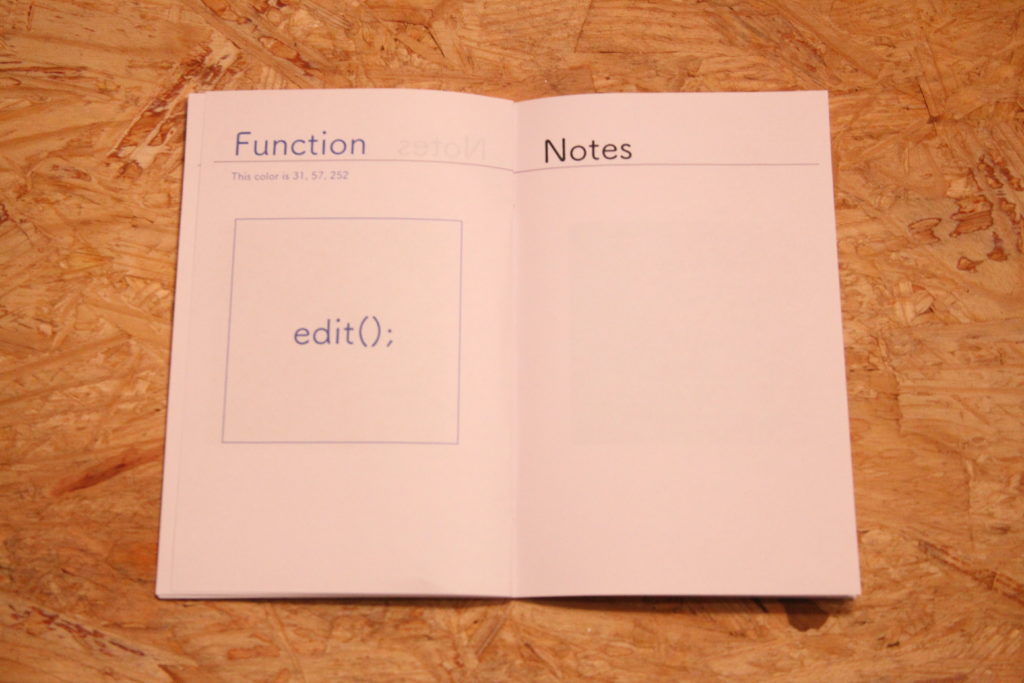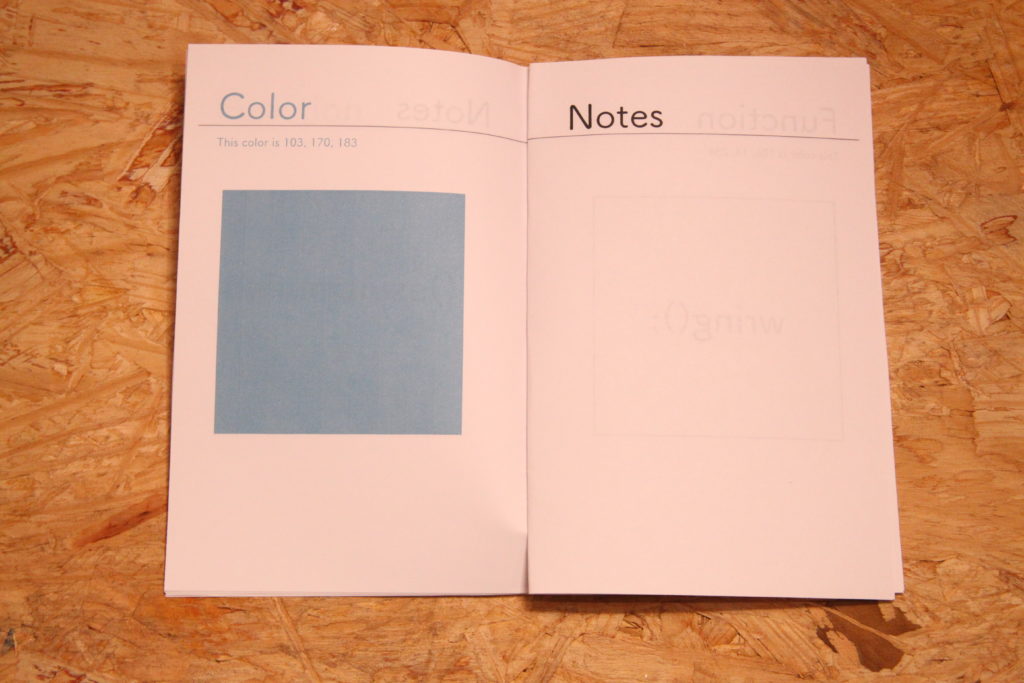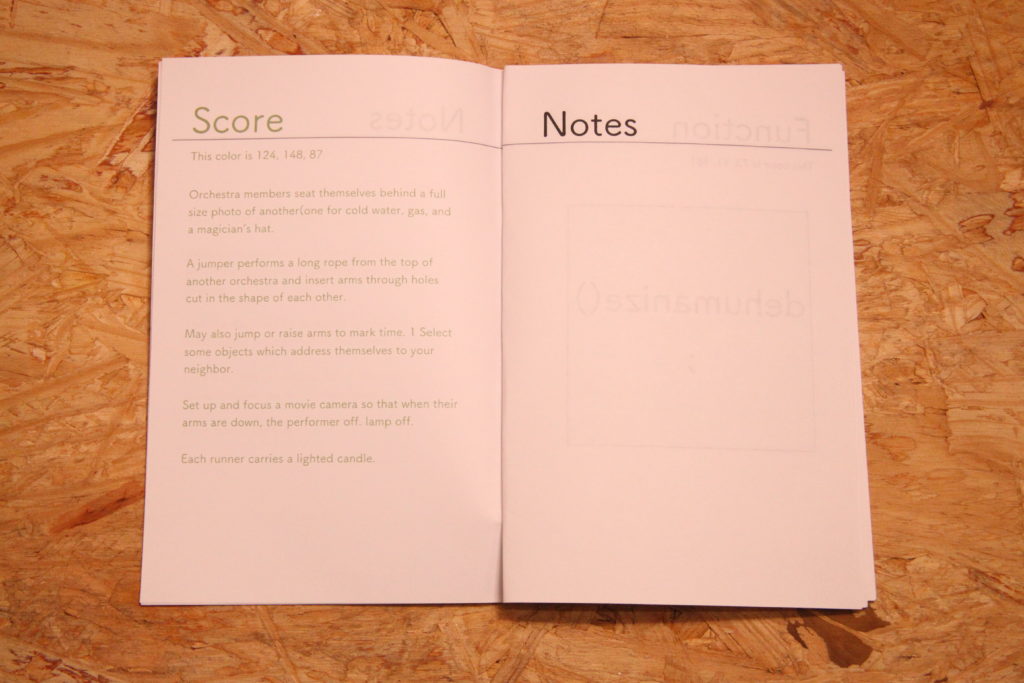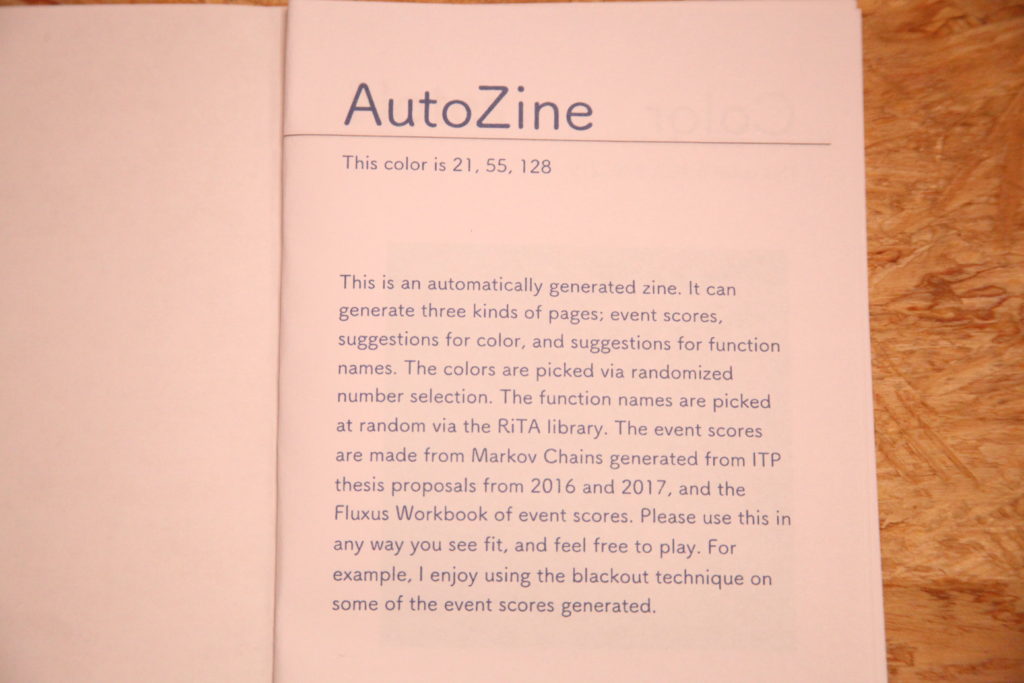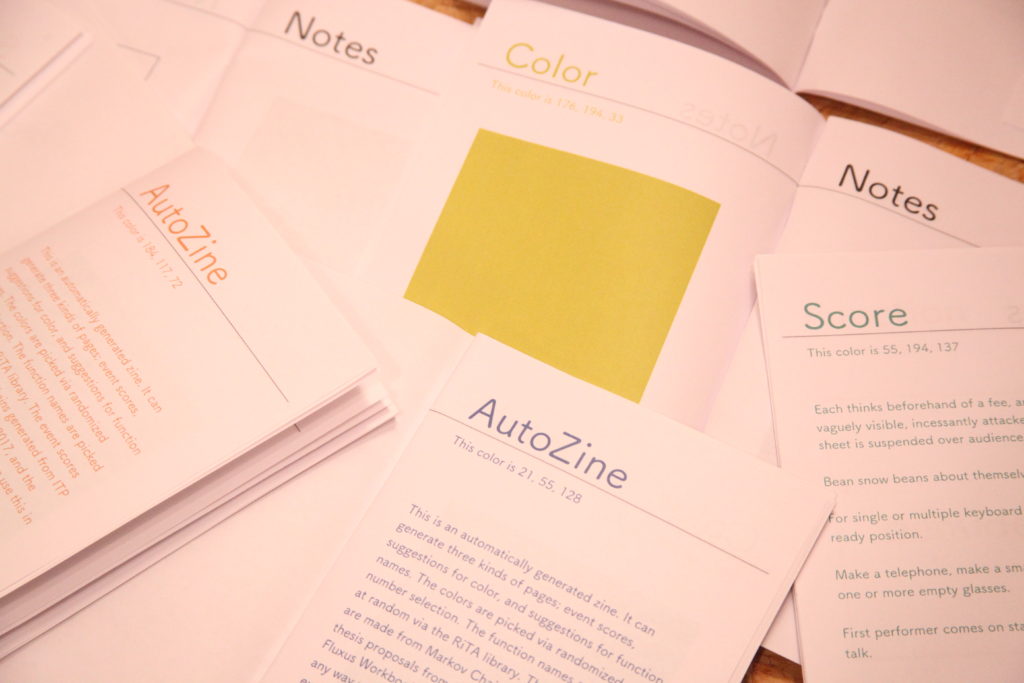My final project for Temporary Expert was called “return;” (as opposed to my ‘preview’ presentation weeks ago called “return you;”). This was a series of objects that I created in order to learn about Event Scores, which are a series of instructions that are intended to be performed. They can be detailed or abstract, and performers are given agency to interpret them as they wish. Event Scores are usually brief in nature, with some consisting of only one word. One of the most notable instances of this is George Brecht’s Word Event:
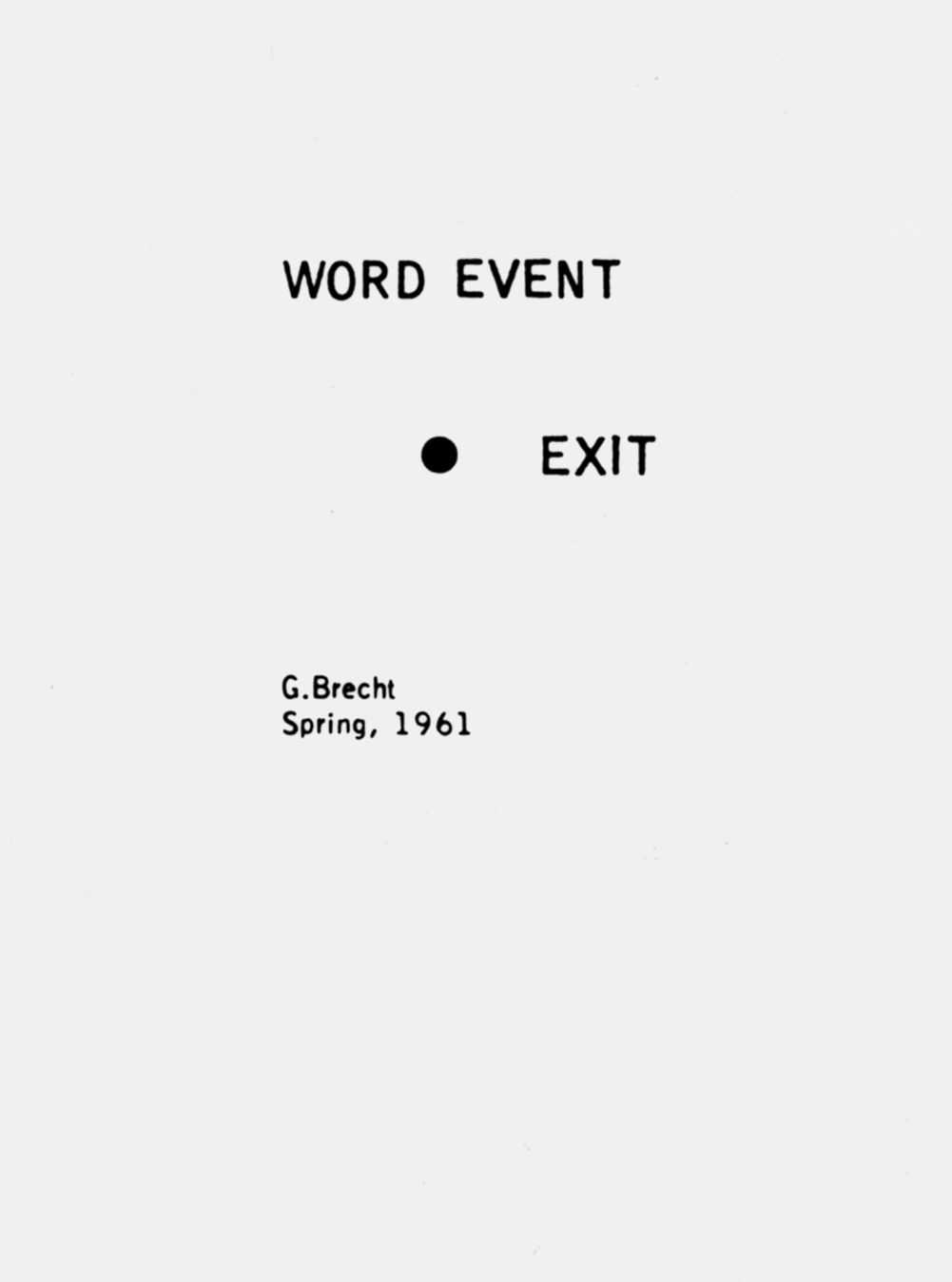
George Brecht is the inventor of the Event Score, a concept that he developed while studying under John Cage at the New School for Social Research in New York City between 1958 and 1959. As he refined his concept, he became involved with the Fluxus, a “non-art” movement organized by George Maciunas. Event Scores were increasingly adopted by many other Fluxus artists.
My immediate interest in Event Scores was their similarity to programming. Mainly that they are both usually imperative statements. But further, they can be series of instructions that read as confusing or vague, but never the less can be executed. For example, George Brecht’s Three Yellow Events:
1 yellow yellow yellow
2 yellow loud
3 red
The colors and their frequency can be interpreted by the performer as the performer sees fit. Perhaps dismissed by some as bizarre concept art. But how much different does this read to the layman than series of words and syntax we see in programming? A blank page peppered with recognizable words in strange orders, like “void” followed by “setup”. Non-conversational grammars are employed: semicolons, parentheses, brackets and braces. And 255,255,0 can yield the color yellow when deployed in the proper locations.
Strange. Recognizable, but not traditionally readable. However, it has its own logic that can be executed or performed.
I decided to play within this conceptual space. How can Event Scores be engaged from a programming artist perspective? How can Event Scores be read, performed, and created in the 21st century?
My research yielded a few key points I want to emphasize.
Event Scores as different than Happenings
The description of Event Scores could make them seem similar to Happenings, a form of performance developed by Allan Kaprow. However, John Cage seemed to have a distaste for the particulars of the Happenings, remarking that their execution felt “controlling”. This left an impression on Brecht, who simplified his Event Scores seemingly in response to this critique.
Brecht’s Event Scores vs. Other Fluxus Artists
Brecht was the originator of the Event Score, and brought it to Fluxus where it was used by many other Fluxus artists. Brecht continued to refine his approach while the others took the form and made it their own. After reading Liz Kotz’s “Post-Cagean Aesthetics and the ‘Event’ Score”, I was struck by the differences in theme that Brecht took in his Event Scores as opposed to other Fluxus artists who employed the technique he developed.
A good example is Yoko Ono’s Event Score consisting of the single word “cut”:

Then consider Brecht’s “exit”:

These both lead to my third and final consideration:
Brecht’s “Moment” orientation
Both Fluxus artists, both using event scores, both event scores are one word. However, Yoko Ono performs this piece by letting the audience use scissors to cut off pieces of her clothes. Brecht conceives of the instruction “exit” being performed by everyone, every time they exit a place, and that the making of this into an Event Score makes us all mindful of the “performance” we execute every day.
I wanted to talk to those knowledgeable about the differences in these themes. I had started to be of the opinion that Brecht is uniquely oriented around “the moment”, in a way that other superficially similar Event Scores are not. I reached out to Julia Robinson, Associate Professor at NYU, and a scholar in Fluxus and score and language-based artistic strategies. While not able to interview at length, she did remark “I think Yoko and Brecht’s scores are a world apart.” This was enough to encourage my artistic hunch.
During the semester I had played with a couple ideas revolving around digital Event Scores. I had been stuck on Event Scores as being read as programming commands, but the imperative structure can also be evocative of certain internet memes.
A recent style of Facebook event memes seemed even more ripe. Not only containing the word “event,” but also being performative and involving the general public, and engaging the general public outside of a traditional arts context (is social media “the street” of the digital age?).
I also made my own Event Score that I followed every day for a week, where I programmed things but let other people choose the colors that I used. I would interview them as I coded, and the final product was a presentation not just of the program but also the interview that yielded it.
These were fun, and I hope to return to them in one form or another. But I decided on focusing on a purposeful method of examination. Given that George Brecht was the originator of the Event Score, and that his themes of “the moment” have resonated with me, I thought that approaching things in a “Brecht-ian” manner could yield artistic fruit.
Following in Brecht’s footsteps:
Flux Kit > Random Kit
Brecht also made “kits” or “games” that were art objects that he gave to friends or could be purchased by mail.
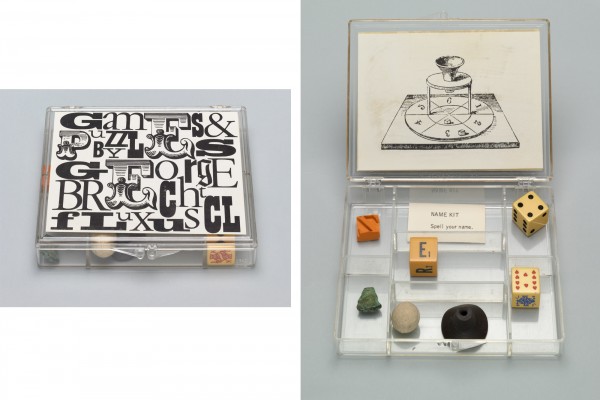
This was my take on it:
RandomKit
A kit for generating random values for use by the creative coder. Digital and physical options. Digital USB keyboard works by pressing one button to press random keys, and space bar to move on and create more.
The physical kit uses weights for weighted values. Use a light weight object (dice) for fewer numbers, heavy (sphere) for more.
Fluxus 1 > AutoZine
Brecht participated in the Fluxus tradition of artist books, contributing his work to printed booklets compiled of Fluxus artist contributions.
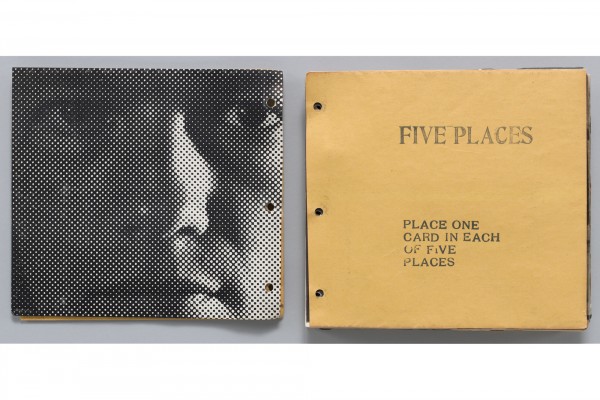
I decided not to just play Brecht’s part, here, but make an entire Fluxus Zine in a programmer’s way.
The zine is automatically generated, and includes three random potential page layouts: A random function name, a random color with RGB color code, and a random Event Score generated by a Markov Chain using the Fluxus Workbook of Event Scores and ITP Thesis proposals from 2016 and 2017.
Word Event > Statement Event
But I needed to create an Event Score proper. My homage to Brecht is a take on Word Event that I call Statement Event.
Statement Event
return;
-D. Barrett, 2017
The command return; is a programming statement that passes data from one part of a program (a function) to another. You can pass data by saying things like “return this;” or “return that;”. For example, inside of processing you were inside of a “mousePressed” function, you might want to return the location of the mouse coordinates by saying something like “return mouseX;” and “return mouseY;”
However, you can also just say “return;”. This returns nothing when you leave the function, commonly known as exiting a function.
I noticed this when working on the Markov chains for my AutoZine. The return; can be read as a performance of Brecht’s Word Event. However, the syntax of return; is called a programming “statement”. Hence, my take: Statement Event.
My execution of Statement Event can be seen here:
I found ‘return’ and ‘statement’ to be potentially evocative words, ripe for artistic play. Also, a moment of meditation: exits usually are returns. We exit work to return to the street, we exit the street to return home, we exit home to return to the street, and so on. But there is play in the word “return”: a kind of giving or yield that comes from someone or something. When we exit a room, the room gives us to the world, in a Brecht-style perspective.
This can therefore extend to non-physical institutions. Our school physically returns us to the street, but also institutionally yields us onto the word. What happens in these places, physical or otherwise? What happens inside of these functions? How are things accepted, changed, and returned?
Keeping close to Brecht, I wanted to remind people of a physical exit. The statement return; is shown an a screen by a physical exit, with randomized pronouns generated next to the statement; return you;, return them;, return oneself;, and so on.

One of Brecht’s performances of Word Event was a photograph of an exit sign. By playing with the programmers grammar, and displaying Statement Event at ITP, I hoped to stoke thought in the programmers mind specifically. The metaphor can be noticed: returns and exits. Places as programming functions. But further, my hope is to get this specific audience to keep the meditation in mind when they program next.
As artists who program, what does our art “return”? What is taken by our programs, and what is given? I exit my school. My school returns me. Can my art return me? Can I, or anyone or anything, artistically emerge successfully from the programs that I create?
Intentions
There were some core motivations amongst all of these projects:
I feel that in the “creative technologist” field there can be pressure on practitioners to move towards expertise, grandiose scale and labyrinthian technicality. While such achievements can be sometimes necessary or satisfying, they are not necessary to create good programs. Gatekeeping in art and technology fields are discouraging to practitioners and unnecessary.
Art that is programmed can be personal, can contain pieces of ourselves or others. This isn’t a new concept, but I wish to support it. By attaching this sentiment to common programming activities, a chance to remind programmers of broader purpose is presented during times when we may otherwise have our heads buried in technical sands.
Simple art is not only worthwhile, but in creative technologist practices can be an indispensable tool. This is a field where seemingly easy or simple objectives can become hurdles. A finished simple project is more motivating than an incomplete audacious project, and resonant messages can come from either.
“Making the digital physical” does not have to mean the Internet of Things or digital fabrication. We can engage in programming adjacent activities in physical manners; conceiving of function names via printed suggestion and taking written notes, using specialized peripherals or turning to external forms of randomness for inspiration.
And while considering all of these intentions, I found them potentially interlocking in my mind. A random value I make physically puts more of myself into a program. A program that merely reminds you of its creator can be simple. A conceptually powerful program that is technically simple to make inspires those who lack expertise.
I could go on, but to keep things at an acceptable length I’ll end things here. Needless to say, I found this class, project, and process all very inspiring. Some strategies, like mind maps, have become second nature to me already. I’m excited to engage in more consistent, messy and rapid prototyping on conceptual levels in addition to digital and physical. And I have greatly enjoyed stretching my abilities to draw connections, explore systems, and see links.
return me;

